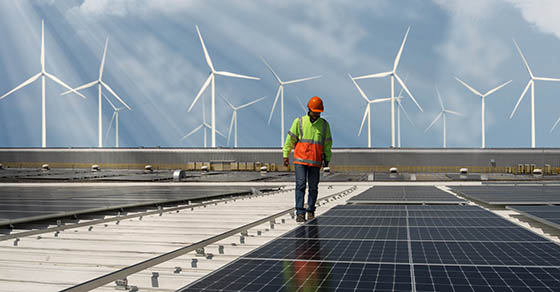Many contractors likely sat up and took notice in August when the Inflation Reduction Act (IRA) was signed into law. The IRA is expected to have a substantial impact on the construction industry, largely because of how it has created or expanded various clean-energy tax incentives.
However, construction projects must satisfy several labor requirements to qualify for the full credit amounts. And these requirements won’t take effect until 60 days after the U.S. Department of the Treasury publishes clarifying guidance. That could take us well into next year.
Statutory requirements
One example of the IRA’s statutory requirements is that qualifying energy projects must provide a prevailing wage — or a basic pay floor — during the initial five-year period after a project is placed into service. This applies to work performed by employees, contractors and subcontractors relating to construction, alteration and repairs.
The law also imposes a minimum threshold for the percentage of such work that must be done by a qualified apprentice. The applicable percentage for 2022 is 10%, increasing to 12.5% the following year, with the phase-in completed at 15% for facility construction in 2024 and beyond.
If a construction company doesn’t pay prevailing wages, or if it uses too many nonapprentice hours on an energy project, a substantial penalty may apply in the form of a reduction to 20% of the full credit amount. For instance, a 30% tax credit could become only 6% if the requirements aren’t met.
When work begins
The construction industry, along with the real estate and energy sectors, are anxiously awaiting federal guidance on how to meet the requirements. One particular point of concern is what it means to “begin construction.” The IRS has issued several notices on the topic in recent years and, as of this writing, there are apparently two ways to do so:
- A taxpayer can satisfy the so-called physical work test by beginning work on a facility of “significant nature,” a determination subject to a fact-based analysis, or
- Construction may be considered to have begun when a taxpayer incurs 5% or more of the total cost of a facility, pursuant to Internal Revenue Code Section 461.
Projects completed within four to 10 years, depending on the technology, meet a special rule known as the continuity requirement. The COVID-19 pandemic prompted the IRS to expand the continuity safe harbor, most recently clarified in Notice 2021-41.
Good news
So, when will we see the guidance needed to confidently claim the IRA’s construction-related energy tax incentives? Expert opinions vary. Some believe it could come out in early 2023, while others offer a more optimistic forecast of the end of this year.
Energy projects on which construction begins before any effective guidance is issued will still likely and generally benefit from the bonus credit rates. This is good news for contractors who have leapt into potentially qualifying jobs this year. We can answer any questions you might have about the IRA and how it could affect your construction company.
© 2022

